![]()
What if large-scale government organizations had a single cabinet-level agency dedicated to communications and public engagement? The idea of a Secretary or Commissioner of Communications may seem outlandish at first glance, but I believe the concept deserves our consideration.
The challenges we face in trying to communicate the work of government and reach the public in a modern world are numerous and significant. Accordingly, the potential benefits of government having its own version of the “Chief Marketing Officer” are substantial as well.
If you’re not convinced, I’d like to make the case by briefly exploring these challenges and potential benefits on two fronts: reactive and proactive communications.
Reactive Communications – Who ya gonna call?
I’ll be honest: Much of my belief in this concept stems from time I’ve spent staffing my office’s general phone lines when my colleagues are away from the office.
When you work in a state government agency named the “Department of Administration,” all bets are off in terms of what kinds of calls you may receive from the public on any given day. Chalk it up to being near the front of the phone book or due to the generality of the term “Administration.” Whatever the reasons may be, I can count on both hands the number of times a public caller has said something along these lines after calling our agency and realizing they are in the wrong place: “Wait, you mean you’re not in charge of handling [insert query topic here]?!”
The callers truly run the full societal gamut:
- People wondering why we haven’t picked up the trash on their street (“Try City Hall. Or maybe your homeowners association.”).
- People seeking legal assistance in a wide variety of different scenarios (“The Attorney General may be able to help, or at least point you in the right direction.”).
- People convinced a previous governor deliberately sabotaged their third-party run for various state and local government offices through the decades (“Um, I really can’t help you there, sir.”).
At this point, I won’t be surprised when someone calls reporting they or their family have seen a spook, specter, or ghost (“I’m ready to believe you.”).
In all seriousness, I’m confident our office is not alone in this phenomenon, and such calls happen for many reasons. It could be lack of knowledge about how government works (that sounds familiar). Some people might just care about things (care really loudly, at that).
But step back for a moment, and put yourselves in the shoes of someone who does not work for government or share the knowledge that you do. If you needed help with a random specific issue, would you know who to call or email? Perhaps more importantly, how long do you think it would take you to determine where to go, researching the large, complex universe of government organizations?
It’s in these moments that I think about our random callers and their plights. While some calls are a little odd (or totally outlandish), many of them come from people who are quite informed and equipped; their calls for help are serious and unmet.
Many local governments have 311 numbers and similar online services to help people connect with their government in these scenarios. But what of the larger world of state and federal government? A robust, enterprise-level communications presence could help.
Proactive Communications – Speaking with One Voice
Where the world of reactive communications is often centered on problems, the world of proactive communications is centered on opportunities. I’ve written in the past about the challenges government faces working through silos, and I believe proactive, strategic communications is an area where these silos can be particularly prevalent.
Based on my experience, the communications model of state and federal government tends to look something like this: Each agency has its own communications staff and infrastructure and handles its communications and public engagement work independently.
Sure, this model empowers agencies to be nimble and to serve their own needs in an efficient way. But what about when the state or fed needs to communicate with one voice at an enterprise-level? What about opportunities to strategize and coordinate when messaging is shaped by numerous agencies? What about crisis communications, for that matter?
In these situations we strive to make it work — forming multi-agency teams and pushing through silos — but often we risk leaving great opportunities behind or muddling our messages by speaking with numerous voices.
What does the alternative model look like? Prior to working in state government, I spent a few years in corporate communications, working for a company with over 125,000 employees and operations all over the world. There, the communications model looked like this: All of the communications staff and infrastructure were located in one department. Each member of the communications team served different beats and functions across the company.
Now, this model was not without flaws either, but it definitely had strategic power. The company was adept at speaking with one voice and cooperating when projects were far-reaching and involved many stakeholders.
Could adapting this model to government amplify our strategic power and enhance the way we engage with the public?
Food for Thought
I know words like consolidation and centralization are loaded terms in the world of government. Re-organizing the communications functions of government in such a way would never be easy and could bring with it many unintended consequences (akin to this example from Indiana).
I advance this idea of a centralized government communications model not to advocate for it, but to make an initial case, to consider what possibilities it might unlock.
What might it look like if our next president’s cabinet included a Secretary of Communications and Public Engagement, leading a team of strategic communicators and public information professionals?
Adam Giorgi is part of the GovLoop Featured Blogger program, where we feature blog posts by government voices from all across the country (and world!). To see more Featured Blogger posts, click here.





Excellent post Adam, couldn’t agree with you more that government needs this. Unfortunately engagement with government is at it lowest in decades, and anything that can be done to streamlining communication and enhance perception would go a long way.
Thanks, Franco!
Thank you for helping!
Also, thank you for helping me remember past data input in the hopes of somehow helping to make a difference…
Ah…FOOD FOR THOUGHT